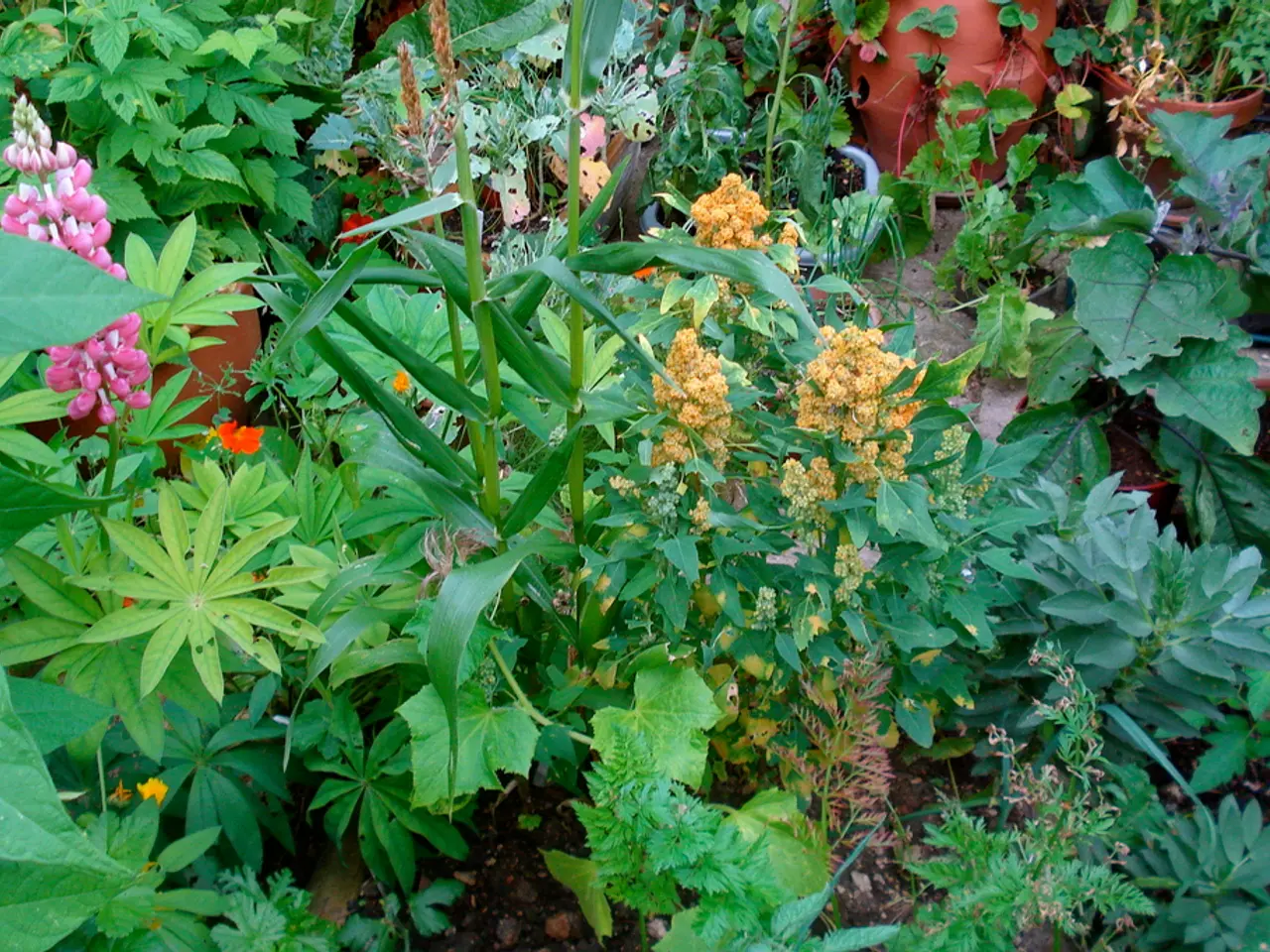Practical Container Gardening Guidelines for Compact Environments Presented Today
Maximizing Greenery in Small Spaces: Tips for Container and Vertical Gardening
Container gardening and vertical gardening are excellent solutions for those with limited space, whether indoors or outdoors. These innovative approaches allow for the growth of a variety of plants, enhancing productivity and aesthetics.
Choosing the Right Pot and Material
When it comes to container gardening, selecting the right pot size and material is crucial. Fast-growing plants require larger pots, while slow growers thrive in appropriately sized containers. Terra cotta pots need more frequent watering due to evaporation, so consider self-watering planters to reduce maintenance.
Grouping Containers by Water Needs
To prevent water damage on balconies, protect floors with saucers or trays. Lightweight containers make movement easier and prevent overloading balconies.
Vertical Gardening: Maximizing Vertical Space
For vertical gardening, tiered plant stands, such as ladder-style, pyramid, or corner units, are ideal for maximizing vertical space. Place sun-loving plants on top and shade-tolerant ones below.
Indoors or on balconies, vertical planters, wall-mounted pots, or leaning ladder shelves allow for growing many plants without taking up horizontal space. Creative options like rain gutter gardens or pallet wall planters can turn walls or narrow spaces into productive growing areas.
Balcony Gardening: Optimizing Space and Light
In small balcony spaces, opt for compact container gardens with dwarf plant varieties like mini tomatoes and peppers to maximize harvests without crowding the space. Use wheeled plant caddies to easily move plants for sunlight optimization or to clear space. Combine edible plants with decorative flowers in containers, integrating utility and beauty.
Indoor Gardening: Growing Herbs and Greens
For indoor gardening, use vertical gardening setups such as wall-mounted planters or shelving units to grow herbs, leafy greens, or small vegetables. Start an indoor herb garden near sunny windows to provide fresh seasoning year-round.
Maintaining Plant Health
In container settings, managing light exposure according to plant needs, frequent watering especially in summer, and regular feeding with water-soluble or slow-release fertilizers are crucial for plant health.
Enhancing Aesthetics
Using shelves and stands maximizes space in small balconies by layering smaller pots on top shelves and larger ones below. Natural light is important for indoor plants, with South-facing windows being ideal. String lights create a cozy atmosphere at night, while LED grow lights mimic sunlight and help plants thrive when natural light isn't enough.
Attaching planters to railings keeps plants safe and makes the balcony look lush. Tiered shelving helps stack plants, so they get enough light without taking up too much room. Grouping plants with similar care needs not only looks nice but makes watering easier.
These ideas support maximizing greenery and productivity efficiently in small spaces like balconies, indoors, or urban patios while maintaining plant health and visual appeal.
Embracing the Right Containers for Various Plant Types
Fast-growing vegetable plants require spacious pots, while slow-growing herbs thrive in smaller containers. Choose Terra cotta pots for aesthetics but opt for self-watering planters to reduce maintenance due to evaporation.
Designing a Vertical Garden for a Harmonious Lifestyle and Home-and-Garden Setup
Vertical gardens, such as ladder-style, pyramid, or corner units, not only maximize vertical space but also integrate beautifully into a home-and-garden setting by placing shade-tolerant plants beneath sun-loving ones.




